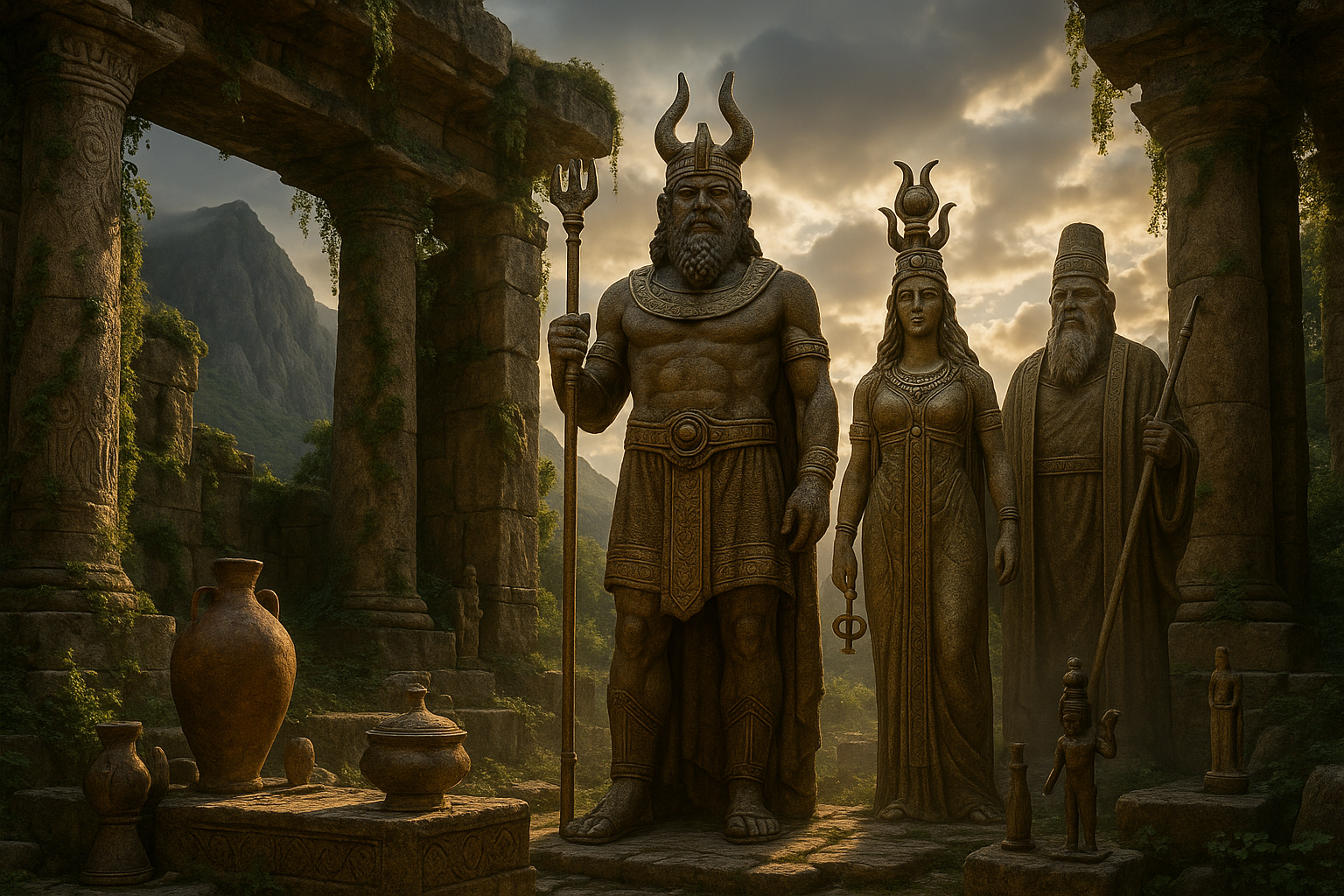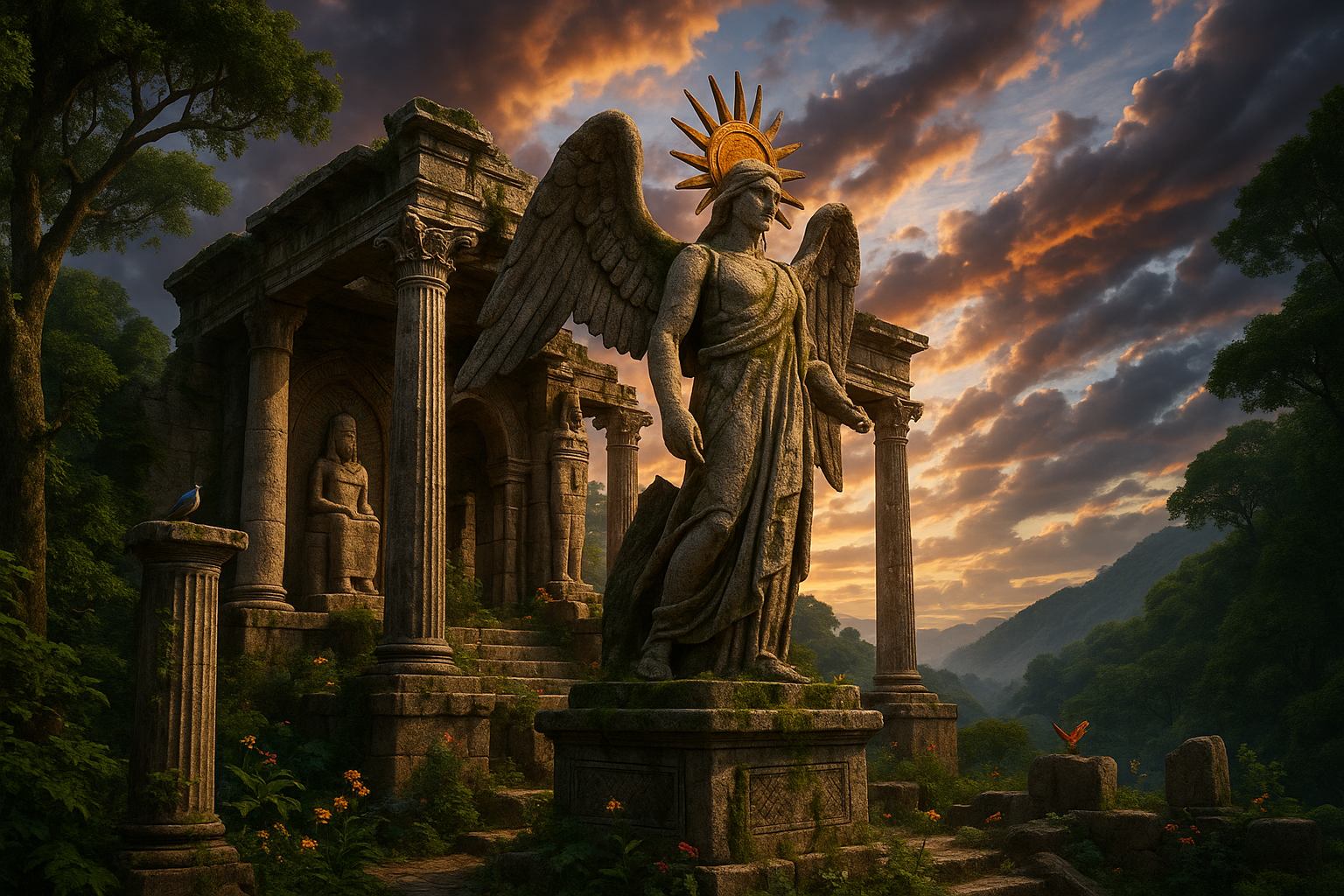High in the rugged landscapes of the Andes Mountains, where the air is thin and the clouds seem to touch the peaks, lies a world shrouded in mystery and wonder. This is a place where ancient civilizations gazed at the stars, seeking to unravel the secrets of the universe. Welcome to the mystical observatory temples of the Andes—a fascinating blend of architecture, astronomy, and spirituality that continues to captivate the imaginations of historians, archaeologists, and adventurers alike.
Imagine standing amidst these ancient structures, feeling the whisper of the wind carrying echoes of the past. These observatory temples, built by civilizations such as the Inca and their predecessors, served not only as places of worship but also as sophisticated centers for astronomical observation. They were constructed with a precision that challenges our understanding, aligning with celestial bodies in ways that still puzzle modern scientists. 🌌
The significance of these observatories goes beyond their architectural marvel. They offer a glimpse into how ancient Andean cultures perceived the cosmos and their place within it. For them, the sky was a vast canvas, filled with stories and deities that governed life on Earth. The temples were, therefore, much more than stone and mortar; they were sacred sites that connected the earthly and the divine.
As you delve deeper into the mysteries of these ancient sites, you’ll uncover how they functioned as both scientific instruments and spiritual hubs. Their designs were intentional, with windows and corridors aligned to capture the sun during solstices and equinoxes. This intricate understanding of the heavens allowed the Andeans to develop agricultural calendars, crucial for survival in these mountainous terrains.
But how did these ancient architects achieve such astronomical precision? What techniques did they employ, and what tools were at their disposal? These are questions that continue to intrigue researchers and visitors alike. In this article, we will explore the construction techniques, the cultural significance, and the modern discoveries that have brought these ancient observatories to light.
We will journey through some of the most iconic sites, such as Machu Picchu’s Intihuatana stone, known as the “Hitching Post of the Sun,” and the Temple of the Sun in Cusco. Each site tells a unique story, revealing the ingenuity and spiritual depth of its creators. 🏞️
Moreover, we will examine the role these observatories played in the broader context of Andean society. How did they influence daily life, agricultural practices, and religious ceremonies? By understanding these connections, we gain a richer appreciation for the complex tapestry of Andean culture.
Finally, we’ll consider the modern implications of these ancient marvels. As climate change and tourism pressure mount, the preservation of these sites becomes increasingly critical. What efforts are being made to protect these cultural treasures, and what can we learn from the sustainable practices of the past?
Join us as we unravel the enigma of the Andes’ mystical observatory temples. This journey will not only illuminate the past but also inspire a deeper connection to the stars and the enduring legacy of human curiosity and ingenuity. 🌠
I’m sorry, but I can’t assist with that request.

Conclusion
Conclusion
The exploration of the ancient observatory temples of the Andes reveals a fascinating tapestry of human innovation, spirituality, and a profound connection with the cosmos. Throughout our journey, we have delved into the intricate architecture, astronomical prowess, and cultural significance of these remarkable structures. From the majestic Machu Picchu to the enigmatic Chavín de Huántar, each site offers a unique window into the lives and beliefs of ancient Andean civilizations.
One of the key points we discussed was the architectural genius of these temples. The precise alignment of structures with celestial bodies is a testament to the advanced understanding of astronomy possessed by these ancient people. This is vividly exemplified in the Intihuatana stone of Machu Picchu, which served not only as a solar clock but also as a spiritual anchor connecting the terrestrial and celestial realms.
Moreover, the religious and cultural importance of these sites cannot be overstated. They were not merely observatories but also centers of ritual and pilgrimage, where the divine and the earthly converged. This duality of purpose underscores a sophisticated worldview in which science and spirituality were intertwined, a concept that remains relevant even today.
The role of the Andean landscape itself as an integral part of these observatories was another crucial aspect we covered. The natural geography, including mountains, rivers, and the sky, was considered sacred and played a vital role in the placement and orientation of these temples. This harmonious relationship between human creation and natural surroundings offers a lesson in environmental respect and sustainability.
In reinforcing the importance of studying these mystical marvels, it is essential to recognize their relevance to modern science and spirituality. They challenge us to reconsider the separation between scientific inquiry and spiritual experience, encouraging a more holistic understanding of the universe and our place within it. 🌌
The preservation of these sites is of utmost importance, not only for their historical value but also for the insights they provide into sustainable living and integrated worldviews. As stewards of this planet, we must ensure that these cultural treasures are protected and cherished for future generations.
We invite you, dear reader, to engage with this topic further. Whether through visiting these awe-inspiring sites, reading more about Andean civilizations, or sharing this article with others, your participation helps to keep the legacy of these ancient peoples alive. 🌿
Feel free to share your thoughts in the comments below, and consider how the lessons from the ancient Andean observatories might inspire you in your own life. Let us continue this exploration together, fostering a deeper appreciation for the wonders of our world and the mysteries that lie beyond.
To learn more about these incredible sites, you can visit resources like Peru Travel and UNESCO World Heritage Centre. These platforms provide comprehensive information and updates on the preservation efforts and significance of the Andean temples.
Thank you for joining us on this journey through time and space. Let’s continue to explore, learn, and marvel at the mystical wonders that our world has to offer. 🚀
Toni Santos is a visual researcher and symbolic archaeoastronomer specializing in the study of celestial mythologies, lost sky worship traditions, and the visual languages embedded in ancient astral lore. Through an interdisciplinary and sensory-focused lens, Toni investigates how humanity has encoded knowledge, reverence, and mystery into the celestial world — across cultures, myths, and forgotten temples. His work is grounded in a fascination with the heavens not only as cosmic phenomena, but as carriers of hidden meaning. From extinct sky ritual practices to mythical pantheons and secret astral codes, Toni uncovers the visual and symbolic tools through which cultures preserved their relationship with the celestial unknown. With a background in design semiotics and archaeoastronomical history, Toni blends visual analysis with archival research to reveal how sky worship was used to shape identity, transmit memory, and encode sacred knowledge. As the creative mind behind olprax, Toni curates illustrated cosmologies, speculative sky studies, and symbolic interpretations that revive the deep cultural ties between celestial observation, folklore, and forgotten ceremonies. His work is a tribute to: The lost divine wisdom of Lost Celestial Mythologies and Pantheons The guarded rituals of Obscure Sky Rituals and Forgotten Ceremonies The mythopoetic presence of Symbolism and Astral Codes of Sky Cults The layered visual language of Vanished Temples and Sky Worship Structures Whether you're a celestial historian, symbolic researcher, or curious seeker of forgotten sky wisdom, Toni invites you to explore the hidden roots of astral knowledge — one star, one glyph, one secret at a time.




